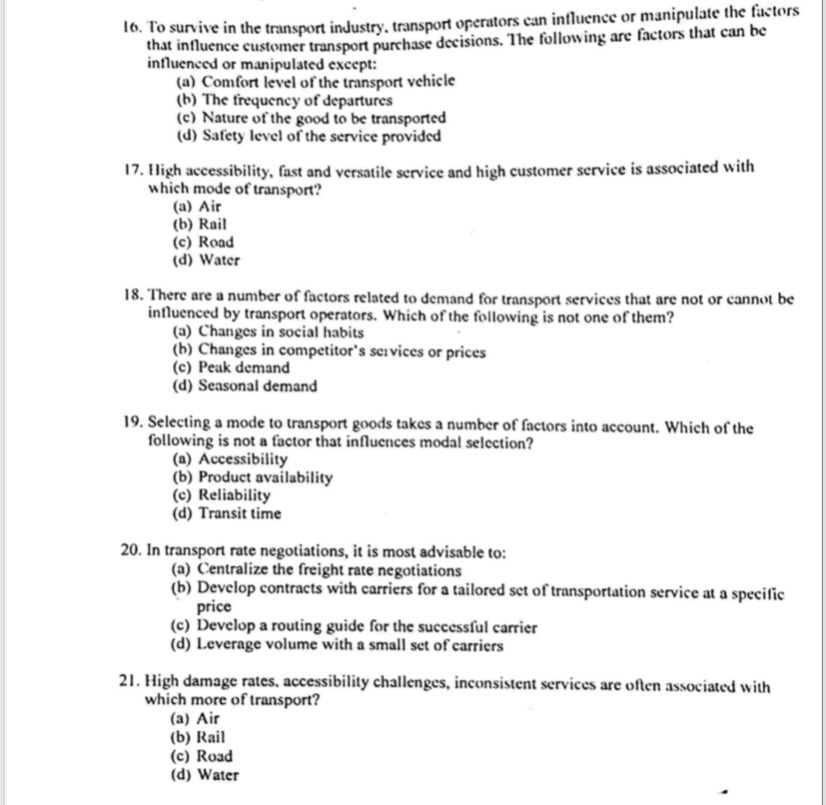16. To survive in the transport industry, transport operators can influence or manipulate the factors that influence customer transport purchase decisions. The following are factors that can be influenced or manipulated except: (a) Comfort level of the transport vehicle (b) The frequency of departures (c) Nature of the good to be transported (d) Safety level of the service provided 17. High accessibility, fast and versatile service and high customer service is associated with which mode of transport? (a) Air (b) Rail (c) Road (d) Water 18. There are a number of factors related to demand for transport services that are not or cannot be influenced by transport operators. Which of the following is not one of them? (a) Changes in social habits (b) Changes in competitor's seivices or prices (c) Peak demand (d) Seasonal demand 19. Selecting a mode to transport goods takes a number of factors into account. Which of the following is not a factor that influences modal selcction? (a) Accessibility (b) Product availability (c) Reliability (d) Transit time 20. In transport rate negotiations, it is most advisable to: (a) Centralize the freight rate negotiations (b) Develop contracts with carriers for a tailored set of transportation service at a specific price (c) Develop a routing guide for the successful carrier (d) Leverage volume with a small set of carriers 21. High damage rates, accessibility challenges, inconsistent services are often associated with which more of transport? (a) Air (b) Rail (c) Road (d) Water
Breakeven Analysis
Break Even Analysis is a term used in business, cost accounting and economics. It refers to a point where the total cost incurred becomes equal to the total revenue earned. Break Even Analysis determines the number of units to be sold to earn the revenue required to cover the total costs. Total cost is a sum total of fixed and variable costs.
Process analysis
The term process analysis can be defined as breakdown of production process into different phases that converts inputs into output. A series of routine activities are incorporated using organizational resources with a view to achieve operational excellence.
Question 16, Question 17, Question 18, Question 19, Question 20, Question 21







Step by step
Solved in 2 steps with 6 images









